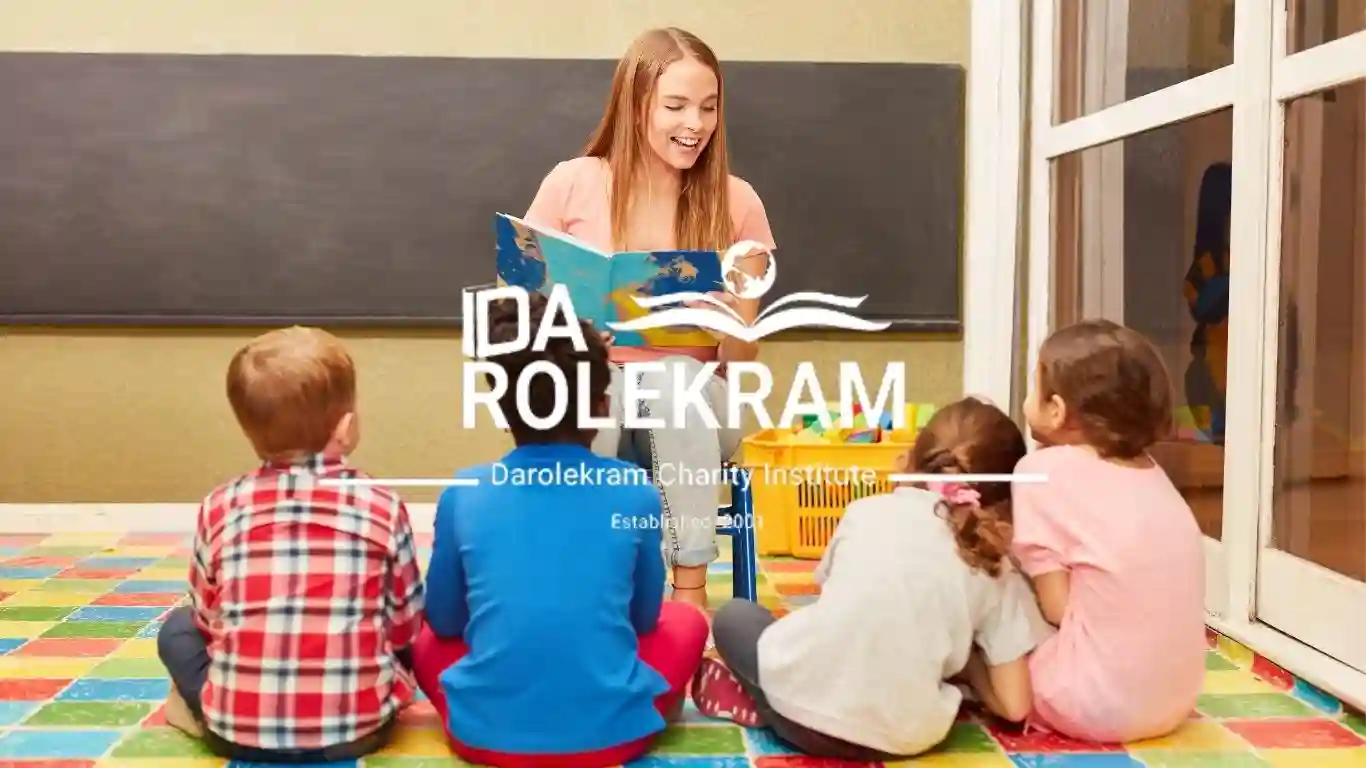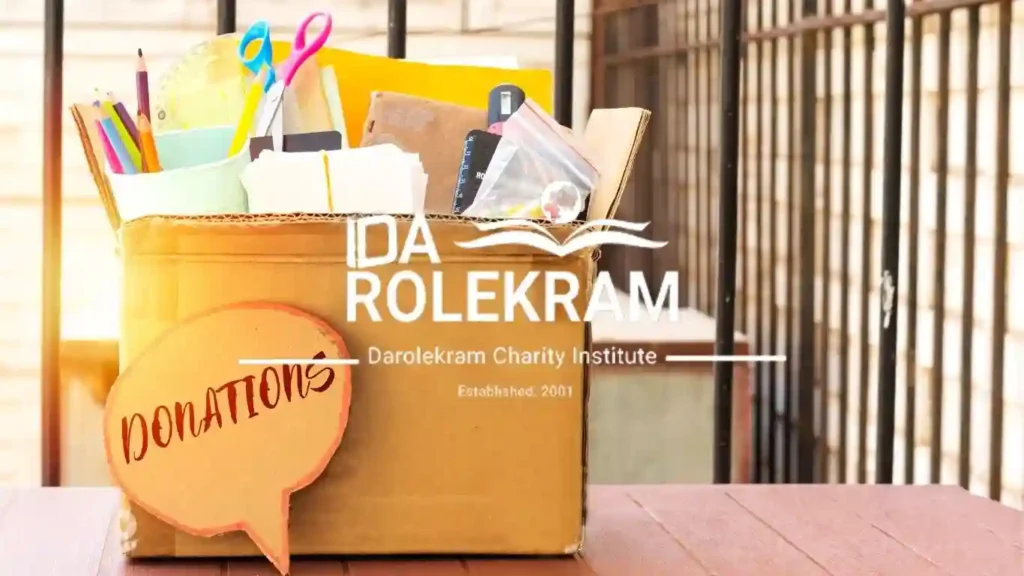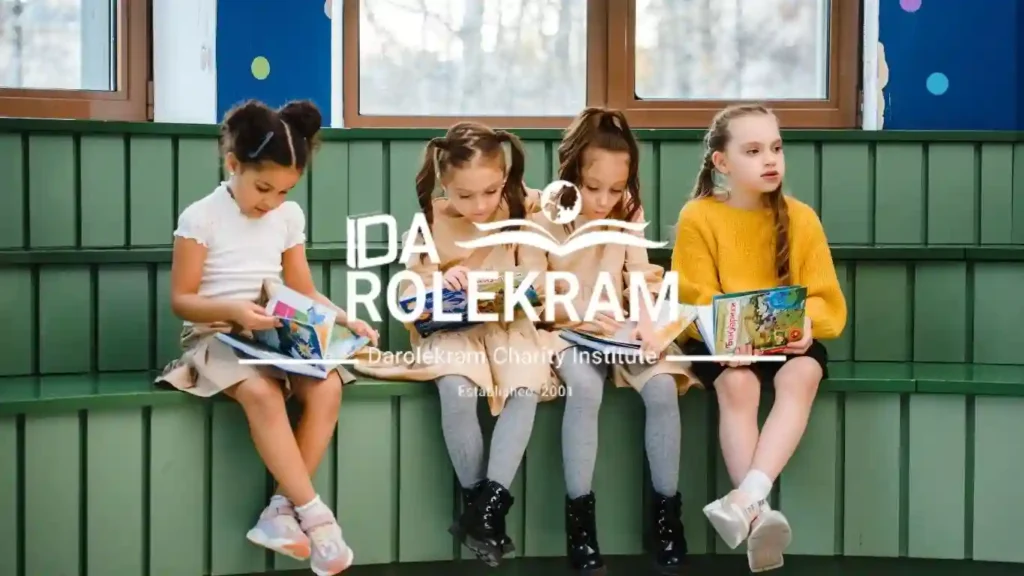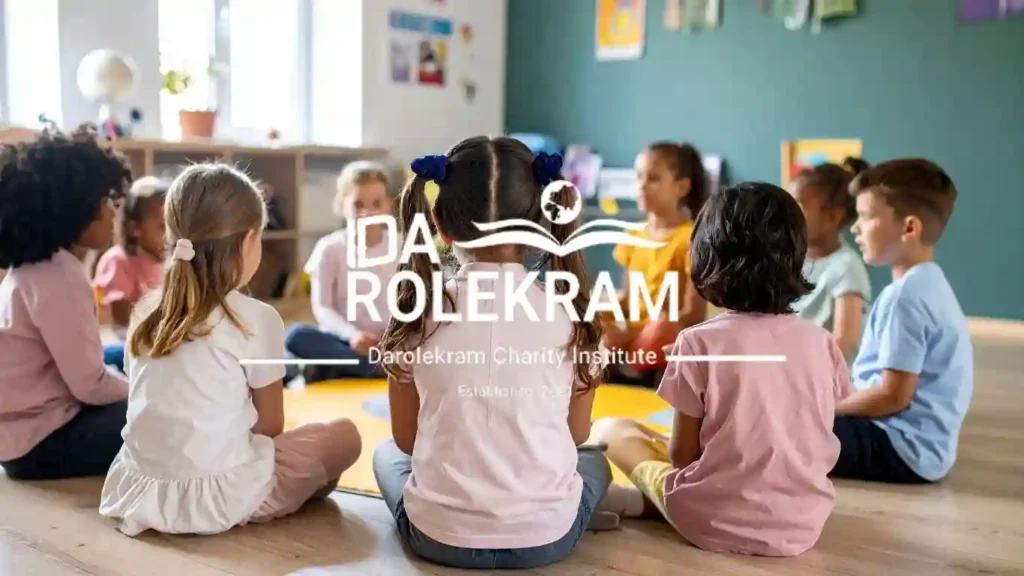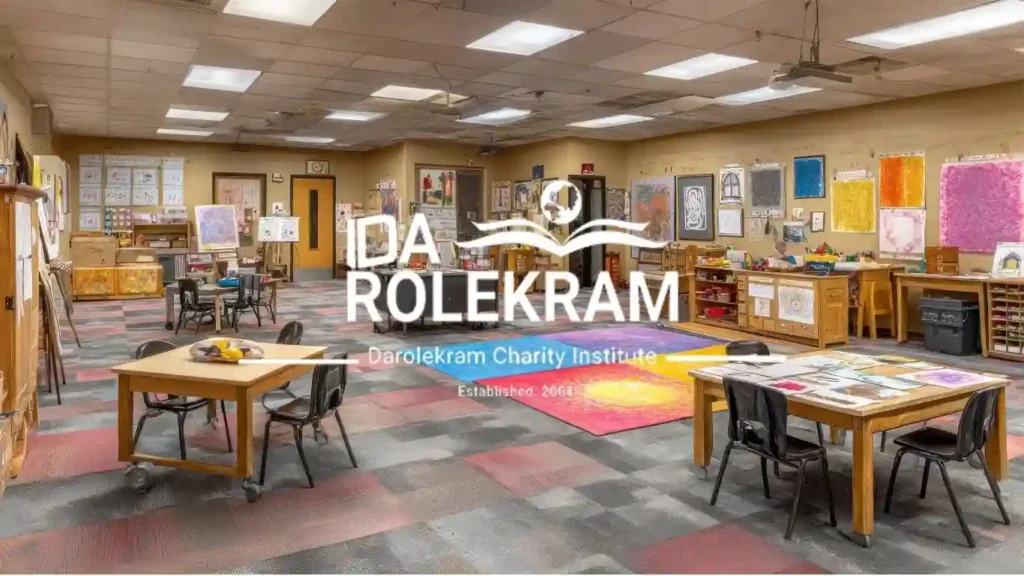Every child deserves the right tools to learn, grow, and dream. Yet, in Iran, thousands of children return to school each year without even the most basic supplies. The “Back to School” campaign by Darolekram Charity—supported internationally through Child Foundation—offers a chance for you to change that story. When you donate school supplies or funds, you’re not just giving pencils and backpacks; you’re delivering hope and unlocking opportunities for a brighter future. This guide answers your top questions and shows you how, wherever you are in the world, you can make a real difference for students in need across Iran.
Back to School Campaign 2025 – Iran
Every year, as summer draws to a close and families across Iran prepare their children for the new school year, a painful reality lingers in the background. According to official statistics published by the Statistical Center of Iran, more than 930,000 children were deprived of education in the 2023–2024 academic year. That number represents 930,000 forgotten dreams—a generation whose future is at risk.Yet, even in the face of such alarming figures, there is always a point of hope for us Iranians: our sense of empathy and solidarity. Without the compassion and support of ordinary people, these numbers could become even more catastrophic. Last year, thanks to this spirit of unity, the Be-Mehrabani platform, through its “Back to School” campaign which continued until October, was able to help thousands of children—who had been forced out of school due to child labor or their families’ financial hardship—return to the classroom.This year, the Back to School Campaign 2025 is once again calling on compassionate hearts to help ensure that every child in Iran has the chance to chase their dreams and build a brighter future. Together, we can turn the tide for a generation at risk.
Why School Supplies Matter for Children in Iran?
School supplies are the foundation of a child’s educational journey. Without notebooks, pens, backpacks, and uniforms, many children in Iran struggle to participate in class, complete homework, or even attend school regularly. For families facing economic hardship, these supplies are often a luxury they can’t afford. Lack of basic materials can lead to embarrassment, absenteeism, and eventually dropping out. By providing these essentials, you help children build confidence, stay engaged, and focus on their studies. The simple gift of a backpack or a set of books is sometimes all it takes to keep a student’s dreams alive. Your support ensures that no child is left behind due to poverty. And when children have what they need, entire communities benefit from their future success.
Who Benefits from the Back to School Campaign?
The Back to School campaign targets the most vulnerable children in Iran—students from low-income families, orphans, and those living in remote or underserved areas. Many children who benefit from this program would otherwise start the school year with empty hands and little hope. The campaign also supports children who have lost parents, those impacted by natural disasters, and kids whose families struggle with unemployment or illness. By reaching these at-risk groups, the campaign levels the playing field, giving every child the chance to learn and thrive. The ripple effect extends to teachers and classrooms, as equipped students are more engaged and motivated. Ultimately, your support uplifts not just individuals but whole communities.
Support Iranian Students: Donate School Supplies through Child Foundation to Darolekram Charity
If you live outside Iran and want to help, there’s a secure, trusted pathway: donate through Child Foundation, which partners directly with Darolekram Charity. This collaboration ensures your donation reaches the right hands and is used transparently. The process is simple—just visit the Child Foundation contact page, mention your intention to support Darolekram’s Back to School campaign, and their team will guide you. Your gift will be combined with others to maximize impact, allowing for bulk purchase and efficient distribution of school supplies. By choosing this route, you join a community of global donors making a direct difference in the lives of Iranian students.
What School Supplies Are Most Needed?
The needs are both basic and urgent. Notebooks, pens, pencils, and erasers form the core of every student’s toolkit. Backpacks and school uniforms are also in high demand, as they are often required for attendance but out of reach for many families. Other vital items include rulers, colored pencils, art supplies, calculators, and, increasingly, digital devices like tablets or smartphones for remote learning. Hygiene items—such as masks, sanitizer, and lunchboxes—are also important, especially after the pandemic. By donating these supplies, you help bridge the gap and give children the confidence to walk into the classroom prepared and proud.
How Does Darolekram Distribute Donated Supplies?
Darolekram has established a transparent and efficient system for distributing donated supplies. First, they identify children most in need by working with schools, local communities, and social workers. Supplies are then packaged thoughtfully to ensure each child receives a complete kit, tailored to their grade and needs. Distribution events are organized at the start of the school year, often with the participation of volunteers and community leaders to foster a sense of celebration and inclusion. Darolekram tracks every donation and provides donors with updates and evidence of delivery, guaranteeing that your support goes exactly where it’s needed most.
How Can You Donate School Supplies or Funds?
There are two main ways to contribute: donate actual school supplies or make a financial donation. If you have access to new supplies, you can send them to Darolekram’s collection centers in Iran. For international donors, it’s often easier and more cost-effective to donate money, which allows Darolekram to purchase supplies in bulk at lower prices. Through Child Foundation, you can make a secure donation online and even specify that your gift is for the Back to School campaign. Both options are impactful—choose what works best for you and know that every contribution counts.
Donate Online: Safe and Secure Payment Options
Donating online is fast, safe, and convenient. Both Darolekram and Child Foundation offer secure websites with multiple payment options, including international credit cards and, in some cases, PayPal or bank transfers. Your personal and financial information is protected with industry-standard encryption. After donating, you’ll receive an official receipt for your records and updates on how your gift is being used. If you have questions or need help with the process, both organizations provide responsive customer support to guide you every step of the way.
Can I Sponsor a Child’s School Supplies?
Absolutely! Sponsoring a child means covering the cost of a full set of school supplies for one student. Darolekram offers programs where you can make a donation in your name or in honor of someone else, and directly support a child’s educational journey. Sponsorships often include updates about the child you’re helping, so you can see the real impact of your generosity. This personalized approach creates a meaningful connection between donors and beneficiaries, and can inspire ongoing involvement and support.
Impact Stories: How Your Donations Change Lives
Your donation is more than a gift—it’s a lifeline. For example, a simple backpack full of supplies can be the difference between a child attending school with pride or staying home in shame. Darolekram regularly shares real-life stories and testimonials from students and families who have benefited from the campaign. These stories highlight improved academic performance, higher attendance rates, and renewed hope for the future. By contributing, you become part of these success stories and help build a better future for countless children.
How to Track the Use of Your Donation
Transparency is a core value at Darolekram. After donating, you’ll receive emails or newsletters detailing the progress of the Back to School campaign. The organization shares photos, videos, and statistics about distribution events. If you sponsor a specific child, you may receive personalized updates. You can also visit Darolekram’s website or social media channels for the latest news. This commitment to accountability ensures your generosity truly makes a difference.
What is the Back to School Campaign in Iran?
A yearly initiative by Darolekram to provide essential school supplies to children in need across Iran.
Why is donating school supplies important?
Many children in Iran lack basic materials like notebooks, pens, and uniforms, which are critical for their education.
What types of school supplies can I donate?
Notebooks, pens, pencils, backpacks, uniforms, calculators, and digital devices are among the most needed items.
Can I donate money instead of supplies?
Yes, monetary donations help Darolekram purchase supplies in bulk and distribute them efficiently.
How do I donate school supplies to Darolekram?
You can send supplies directly to Darolekram’s collection centers or donate online to fund purchases.
Is my donation tax-deductible?
Tax benefits depend on your country’s laws and partnerships Darolekram has with local nonprofits.
Can I sponsor school supplies for a specific child?
Yes, Darolekram offers sponsorship programs where donors can support a child’s full school kit.
The School Supply Crisis in Iran
Walking through Tehran’s bazaars last year, I was struck by something: school supplies cost more than many families spend on food each week. A basic calculator – essential for high school math – costs what some households earn in three days. Notebooks that would seem inexpensive elsewhere represent major purchases for Iranian families.
Economic sanctions have complicated this situation significantly. Many educational materials must be imported, driving prices higher. Technology supplies have become particularly expensive and difficult to obtain. Meanwhile, Iran continues hosting over three million refugees, many with school-age children requiring educational support.
I spoke with teachers from different regions who shared remarkably similar stories. Students sharing single pencils until they disappear completely. Homework written on scraps of paper or the margins of old documents. Children missing classes because they lack supplies for specific activities. These aren’t isolated incidents – they represent widespread patterns affecting education nationwide.
The psychological impact concerns me greatly. Students without adequate supplies often feel ashamed or excluded. They participate less in classroom activities. Some develop negative associations with school that persist long after the immediate supply problems get resolved. This creates educational gaps that compound over time, affecting not just academic performance but future opportunities and aspirations.
Essential Supplies That Transform Learning
Through conversations with educators and students, I’ve identified which supplies create the biggest impact. Writing materials top every list, but quality matters enormously here. Cheap pencils that break constantly create frustration and waste time. Good pens that flow smoothly enable students to focus on their ideas rather than struggling with tools.
Notebooks require careful consideration too. Iranian schools often specify particular formats – specific line spacing, paper quality, binding styles. Receiving the wrong type means supplies go unused, which defeats the purpose entirely. Organizations like Darolekram Foundation understand these nuances because they work directly with schools and communities. Calculators deserve special attention. Mathematics education in Iran has become increasingly sophisticated, but many students still perform complex calculations manually because they lack proper tools. Imagine trying to learn advanced concepts while struggling with basic arithmetic. Quality calculators eliminate this barrier and enable students to focus on understanding rather than computation.
Technology supplies represent the fastest-growing need category. The pandemic accelerated digital learning adoption, but many families cannot afford devices or internet access. Students without technology fall behind quickly in educational environments that increasingly assume digital capability. This digital divide widens daily, creating long-term disadvantages that affect university admission and career prospects.
Real Impact of Supply Support
I’ve seen the transformation firsthand. Students who receive comprehensive supply support show immediate improvements in attendance and classroom participation. Teachers report better assignment completion rates and higher quality work. But the changes extend beyond academics.
Confidence grows when students have proper tools and feel prepared for classroom activities. They participate more actively in discussions, volunteer for presentations, and take on leadership roles. This psychological transformation often proves more valuable than the supplies themselves, creating positive cycles that enhance overall educational experiences.
Long-term tracking by organizations reveals impressive outcomes. Students who receive sustained supply support graduate at higher rates, enroll in universities more frequently, and pursue careers that contribute significantly to their communities. Many become teachers themselves, extending the benefits of educational support to future generations.
These outcomes demonstrate why school supply donations create such powerful returns on investment. A relatively modest contribution can alter a student’s entire educational trajectory and career prospects. When multiplied across thousands of students, these individual transformations create substantial social benefits that strengthen entire communities.
Identifying Trustworthy Organizations
Not all charitable organizations deserve your trust or money. I’ve encountered groups that spend more on fundraising than student support, others that lack basic accountability systems, and some that simply don’t deliver promised services. Finding reliable organizations requires careful research and evaluation.
After investigating dozens of charities working in Iranian education, I’ve developed criteria for identifying truly effective organizations. They demonstrate financial transparency by publishing detailed spending reports. They maintain accountability through regular donor communication and impact measurement. Most importantly, they treat recipients with dignity rather than as charity cases.
Geographic factors complicate organizational assessment. International groups often have impressive websites and celebrity endorsements but may lack cultural understanding necessary for effective program delivery. Local organizations possess community connections but might lack infrastructure for large-scale operations. The most successful groups combine international resources with local expertise.
I’ve found that personal recommendations from people who’ve worked with organizations provide the most valuable insights. Fellow donors, teachers, and former students offer perspectives that official reports cannot capture. These conversations have guided me toward organizations that consistently deliver results.
Why Darolekram Foundation Earned My Trust
When I first learned about Darolekram Foundation, I was skeptical. Another charity claiming to transform education? I’d heard similar promises before. But after investigating their operations extensively, interviewing former students, and reviewing their financial records, I became convinced of their exceptional effectiveness.
They’ve operated for over twenty years without major scandals or financial irregularities – remarkable in any sector, but especially in charitable work where mismanagement appears frequently. Currently supporting 8,000 scholarship students across more than 20 branches, they’ve assisted over 11,000 students throughout their history. These numbers demonstrate both scale and sustainability.
What impressed me most was their approach to student dignity. Recipients aren’t publicized as success stories or required to perform gratitude for cameras. They receive support privately, respectfully, without conditions that might compromise their self-esteem or academic focus. This philosophy permeates everything they do, from initial student selection through graduation support.
Their comprehensive support model makes practical sense. Instead of simply providing supplies and hoping for the best, they address multiple barriers to educational success. Health problems? They assist with medical costs. Family crises? They provide counseling support. College preparation? They offer tutoring and entrance exam materials. This holistic approach produces superior outcomes compared to narrow interventions.
Financial transparency builds additional confidence in their operations. Donations are tracked meticulously from receipt through delivery to students. Administrative costs remain low, with clear separation between educational support funds and operational expenses. Regular donor reports provide specific details about fund utilization and student outcomes.
Alternative Organizations Worth Considering
Relief International operates as one of only two international nonprofits authorized to conduct humanitarian work in Iran. Their educational programs focus primarily on emergency response – rebuilding schools after earthquakes, providing supplies during floods, supporting students affected by natural disasters.
They excel at crisis response but prove less effective for ongoing educational support. If you want to help students affected by emergencies, Relief International delivers results quickly and professionally. For sustained educational assistance, other organizations might serve your goals better.
Children of Persia takes a different approach, focusing specifically on Iranian students through volunteer networks that maintain strong cultural connections. They’ve operated for over twenty years and possess intimate knowledge of educational needs and preferences. Their personal touch appeals to donors seeking direct involvement with beneficiaries
Local community organizations offer another option, though they require greater donor oversight and involvement. These groups often have detailed knowledge of particular schools or regions but may lack infrastructure for large-scale operations. They work best for donors who want hands-on involvement in supply distribution and impact monitoring.
Strategic Approaches to Educational Giving
Money trumps stuff in most situations. I know this sounds counterintuitive – buying specific supplies feels more personal and tangible than writing checks. But organizations operating locally can purchase supplies at significantly lower costs than international retail prices. Your hundred-dollar donation often buys twice as many notebooks when spent in Iran rather than shipped from abroad.
Financial donations also provide crucial flexibility that physical contributions cannot match. When earthquakes damage schools, organizations can immediately redirect funds to replace damaged supplies. When technology opportunities arise, money can address these needs without lengthy fundraising campaigns. This adaptability makes monetary donations particularly valuable for organizations serving diverse populations with varying needs.
However, physical donations aren’t worthless. They work well when donors have access to discounted materials or when community involvement matters more than pure efficiency. School supply drives create visible opportunities for multiple contributors while building local awareness about Iranian educational needs. These collaborative efforts often generate substantial material quantities while creating lasting engagement with educational support causes.
The optimal approach depends on your resources, the recipient organization’s capabilities, and current educational priorities. Established organizations like Darolekram Foundation can advise which donation methods work best for their programs and student populations. This guidance helps ensure your contribution creates maximum impact.
Why Financial Contributions Usually Work Better
Local purchasing power makes monetary donations incredibly efficient. Organizations can leverage bulk pricing, seasonal sales, and regional suppliers to maximize supply quantities. This multiplication effect means donated funds often purchase two to three times more materials than equivalent amounts spent on retail supplies in donor countries.
Administrative efficiency strongly favors financial donations. Processing, storing, and distributing physical supplies requires significant staff time and warehouse space that organizations could otherwise dedicate to direct student services. Money converts immediately into needed supplies without intermediate handling requirements or storage challenges.
Quality assurance becomes easier with monetary donations. Organizations can select supplies meeting local educational standards and cultural preferences rather than working with donated materials that might prove inappropriate or unusable. This ensures purchased items actually benefit students rather than creating disposal problems.
Currency donations also support local economies by enabling purchases from regional suppliers rather than importing materials from distant locations. This secondary benefit strengthens communities while addressing educational needs, creating positive economic impacts beyond direct student support.
When Physical Donations Make Sense
Physical supply donations work effectively when donors have access to materials at prices significantly below retail costs. Teachers, retailers, and manufacturers sometimes have surplus supplies available at substantial discounts, creating opportunities for high-impact physical donations that exceed the value of equivalent monetary contributions.
Community supply drives can generate impressive material quantities while building local engagement with Iranian educational needs. Schools, religious organizations, and workplace groups often provide excellent venues for collaborative donation efforts that exceed individual contributor capabilities while creating lasting support networks for educational initiatives.
Specialty items represent another good opportunity for physical donations. Educational technology, scientific equipment, or specialized learning materials might be more readily available to international donors than to organizations operating within Iran’s economic constraints. However, these donations require careful coordination to ensure compatibility and usefulness.
Quality control becomes critical when accepting physical donations from multiple sources. Organizations need clear guidelines for evaluating contributed materials and systems for handling items that don’t meet basic standards. Advance communication prevents problems with inappropriate or damaged donations that waste everyone’s time and resources.
Practical Steps for Effective Donation
Successful educational giving begins with thorough research into potential recipient organizations. I recommend examining their financial transparency, program delivery methods, and documented impact on student outcomes. This preliminary investigation prevents common mistakes that reduce donation effectiveness or create unintended problems.
Start by reviewing publicly available information about organizational finances and programs. Reliable charities publish annual reports, financial statements, and impact assessments that provide insights into their operations and effectiveness. Organizations that refuse to share basic information or provide only vague summaries should raise red flags about their reliability and accountability.
Direct communication with potential recipients offers opportunities to assess their professionalism, knowledge, and alignment with your donation goals. Professional organizations respond promptly to inquiries, provide clear program information, and demonstrate understanding of educational challenges in their service areas. These interactions reveal operational quality that official materials cannot capture.
Reference checks with previous donors provide valuable insights into organizational reliability and communication patterns. Established organizations typically can connect potential supporters with current donors willing to discuss their experiences and observations about program effectiveness and organizational performance over time.
Due Diligence and Organization Assessment
Financial management represents the most critical evaluation factor. Trustworthy organizations provide detailed breakdowns of revenue sources, expense categories, and program spending ratios. They explain how donations get used and demonstrate that educational support receives priority over administrative costs. Transparency in financial reporting usually indicates overall organizational integrity.
Third-party evaluations from charity assessment organizations offer independent perspectives on performance and accountability. While not all effective organizations receive formal ratings, those maintaining high standards typically welcome external evaluation and use assessment results to improve their operations continuously.
Program impact documentation demonstrates effectiveness beyond financial management. Successful educational charities track student outcomes systematically, measure academic improvements objectively, and document long-term benefits for program participants. This information should be readily available to donors requesting evidence of program effectiveness and sustainability.
Organizational longevity and stability provide additional indicators of reliability. Groups that have operated successfully for many years without major scandals or operational disruptions demonstrate institutional strength and commitment. However, newer organizations shouldn’t be automatically dismissed if they demonstrate other indicators of effectiveness and accountability.
Implementation and Follow-Through
Initial communication should establish clear expectations about contribution amounts, preferred uses, and reporting requirements. Organizations perform better when they understand donor preferences upfront rather than discovering conflicts after receiving contributions. This clarity prevents misunderstandings while ensuring alignment between donor intentions and organizational capabilities.
Documentation needs vary among organizations and may include tax receipts, impact reports, or acknowledgment letters required for tax purposes or personal records. Clarifying these requirements prevents delays while ensuring both parties understand their responsibilities throughout the donation process.
Timeline coordination ensures contributions arrive when they create maximum impact rather than storage challenges. Educational supply needs often peak during specific periods, and advance planning enables organizations to integrate donations effectively into their distribution systems without overwhelming their operational capacity.
Regular follow-up maintains connections while providing accountability for contribution utilization. These ongoing relationships often improve donation effectiveness as donors develop better understanding of organizational needs and constraints. Many successful donors maintain multi-year relationships with organizations, creating sustained impact that exceeds one-time contributions.
How does Darolekram ensure fair distribution of supplies?
They work with local communities and schools to identify children most in need and distribute transparently.
Can I volunteer to help with the campaign?
Yes, volunteers are welcome to assist with packing, distribution, and online awareness campaigns.
How can I track the impact of my donation?
Darolekram provides updates via email and publishes success stories on their website and social media.
How to Contact Darolekram for More Information
To learn more about the Back to School campaign, donation methods, or volunteering opportunities, visit the official Darolekram website. If you live outside Iran, you can reach out to Child Foundation via their contact page and mention your interest in supporting Darolekram’s Back to School campaign. Both organizations are ready to answer your questions and help you make a meaningful impact for children in need.

